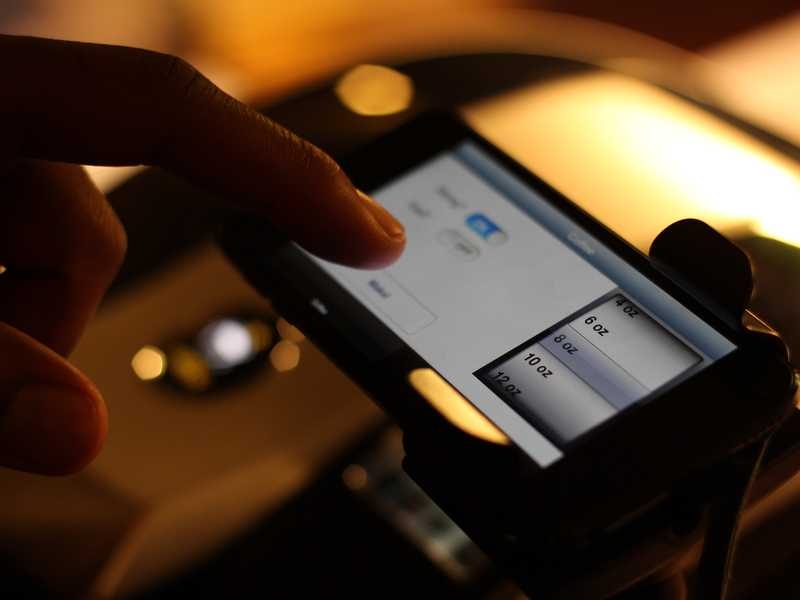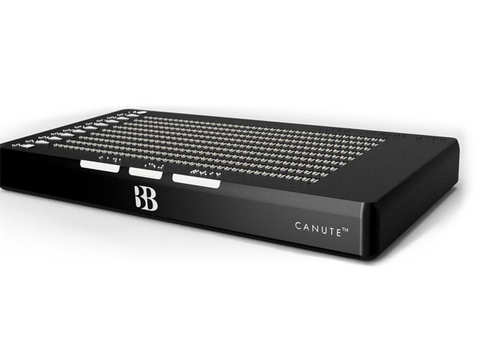Assistive Technology for the Blind: Innovations to Transform Lives
Wiki Article
Discover Cutting-edge Devices Created for the Aesthetically Impaired
The advancement of ingenious tools for the visually damaged stands for a significant innovation in access and self-reliance. Technologies such as wise glasses with AI abilities and mobile applications designed to supply auditory summaries are improving daily experiences for users. Additionally, wearable devices that use haptic comments improve environmental understanding, while modern Braille advancements offer brand-new methods to engage with text. As these tools remain to advance, their effect on the lives of those with visual impairments elevates essential inquiries regarding the future of inclusivity and autonomy in numerous elements of life. What exists in advance in this technological landscape?Smart Glasses for Navigation

Smart glasses made for navigating are transforming the way aesthetically impaired people connect with their setting. These sophisticated gadgets utilize a mix of video camera technology, artificial knowledge, and acoustic feedback to offer real-time details about surroundings. By employing barrier detection systems, smart glasses can signal individuals to potential hazards, making it possible for much safer mobility in both unfamiliar and familiar setups.
The combination of GPS technology better improves navigating capacities, enabling users to get auditory instructions as they relocate. This hands-free technique not only cultivates freedom yet also empowers visually damaged individuals to navigate urban landscapes with boosted confidence. Furthermore, several wise glasses are equipped with functions that recognize landmarks and road signs, supplying contextual information that improves the customer experience.
Furthermore, the development of these gadgets is continually advancing, with firms working to enhance the precision of things acknowledgment and increase the variety of navigational attributes. As smart glasses end up being extra affordable and available, they hold the possible to significantly transform every day life for aesthetically impaired users. Eventually, these cutting-edge devices stand for a vital action towards inclusivity, offering boosted wheelchair and a better feeling of freedom for people navigating the world around them.

Mobile Apps for Daily Living
Just how can mobile applications enhance the day-to-day lives of visually impaired people? Mobile apps are changing the way aesthetically impaired individuals browse their environments, handle day-to-day tasks, and accessibility information. These applications supply vital assistance through different capabilities, fostering freedom and improving high quality of life.Numerous cutting-edge mobile apps are created especially for daily living. As an example, applications like Be My Eyes connect visually impaired individuals with sighted volunteers using video phone calls, enabling them to obtain real-time assistance with tasks such as checking out tags or browsing unknown spaces. Seeing AI, established by Microsoft, utilizes synthetic intelligence to describe environments, reviewed message, and determine items, efficiently transforming a smart device right into a powerful tool for daily aid.
Furthermore, navigation applications customized for the visually damaged, such as Aira and BlindSquare, supply audio-based instructions and ecological info, allowing individuals to traverse their surroundings securely and with confidence. Beyond navigating and instant support, mobile apps additionally sustain organization and task monitoring, with functions that help customers establish pointers, create order of business, and track visits. In summary, mobile applications offer as crucial resources, empowering aesthetically impaired people to lead more independent and fulfilling lives.
Wearable Technologies for Aid
Empowerment with technology is significantly apparent in the world of wearable gadgets designed to assist aesthetically impaired people. These innovative devices integrate seamlessly into day-to-day live, improving navigation and supplying important responses to individuals. Clever glasses geared up with cams can check my source identify faces and read text aloud, enabling customers to interact more with confidence in professional and social settings.An additional noteworthy development is making use of haptic feedback systems in wearable devices. These systems use resonances or various other responsive signals to communicate info concerning the customer's environment, such as challenges or adjustments in surface, boosting mobility and safety. Wearable innovations likewise consist of wristbands that attach to mobile phones, notifying customers to notifications via subtle resonances, thus enhancing connection without dependence on aesthetic signs.
As these modern technologies remain to evolve, they are not only improving independence for visually impaired people yet additionally cultivating a better feeling of incorporation in culture. By connecting the void in between difficulties dealt with in everyday living and the potential for autonomy, wearable technologies function as essential tools in the quest for equal rights and empowerment for those with aesthetic problems.
Audio Description Tools
Sound summary devices play a crucial duty in enhancing accessibility for aesthetically impaired individuals, giving them with the capacity to involve with aesthetic media. Assistive technology for the blind. These devices use narrated descriptions of essential aesthetic aspects in films, tv shows, and live efficiencies, making sure that users can totally understand the context and feelings communicated through visualsSound description can be incorporated into numerous platforms, including streaming solutions, cinema testings, and live movie theater. Many prominent streaming services currently include audio summary as an availability feature, permitting audiences to choose it discount prescription glasses conveniently. In addition to traditional media, specialized applications also exist, providing audio descriptions for art events, galleries, and various other social events.
The performance of audio description pivots on the skill of the narrators, that have to convey visual information succinctly without interfering with the initial sound. Advancements in this field are also leading the way for more personalized experiences, where individuals can readjust the degree of detail and pacing according to their preferences.
Braille Innovations and Tools
Braille advancements and devices have substantially transformed the way aesthetically damaged individuals connect with text and info. Modern innovations have led to the advancement of versatile tools that improve proficiency and independence among individuals.
In addition, portable Braille notetakers integrate traditional Braille johnny depp glasses input with contemporary capabilities, facilitating note-taking, scheduling, and paper editing and enhancing on the move. Braille displays and notetakers. These small tools often feature text-to-speech abilities, connecting the void in between Braille and acoustic information
Additionally, cutting-edge Braille printers have emerged, enabling customers to generate Braille labels, files, and educational materials effectively. This availability cultivates greater involvement in educational and specialist environments, inevitably advertising inclusivity.
In addition, study right into wise Braille innovations remains to broaden. Instruments that include expert system are being explored to provide real-time navigating help and contextual details, boosting the individual experience in diverse setups. Generally, these advancements show a commitment to equipping visually damaged people through modern technology, guaranteeing they can quickly access and involve with the globe around them.

Conclusion
The innovation of ingenious tools for the aesthetically damaged significantly boosts self-reliance and top quality of life. These technologies not only foster greater addition but additionally promote freedom in everyday tasks, eventually adding to a more obtainable and fair society for visually damaged individuals.As clever glasses end up being extra available and budget-friendly, they hold the prospective to dramatically transform daily life for visually impaired customers. Mobile apps are reinventing the means aesthetically impaired individuals browse their environments, handle day-to-day tasks, and gain access to details. Apps like Be My Eyes link aesthetically damaged users with sighted volunteers by means of video clip calls, enabling them to receive real-time help with jobs such as reading labels or navigating unknown rooms.Additionally, navigation apps customized for the visually impaired, such as Aira and BlindSquare, use audio-based directions and environmental information, allowing individuals to traverse their environments securely and confidently.The development of ingenious devices for the aesthetically damaged significantly enhances self-reliance and high quality of life.
Report this wiki page